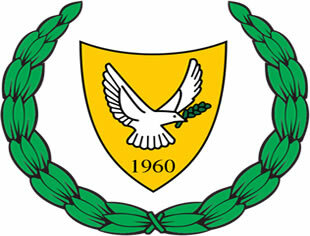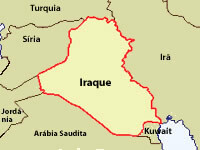The colonizing action of the Jesuit missions, which allowed the survival of a large proportion of the Guaraní Indians, and the long political isolation of Paraguay after independence, gave the country a peculiar ethnic character, which clearly differentiates it from other nations. Latin American countries.
Paraguay is an inland country, that is, without direct access to the sea. Irregularly, elongated in the northwest-southeast direction, it occupies an area of 406.752km2. It is limited to the north and northwest with Bolivia; to the east and northeast with Brazil; and to the south, southeast and west with Argentina.
physical geography
Relief
The entire Paraguayan territory belongs to the large basin formed by the Paraguay and Paraná rivers. It consists of plains, and only in the eastern region appear mountainous formations, of low elevation, structurally linked to the Brazilian plateau.
The Paraguay River, which runs north-south, divides the country into two very distinct parts. To the west extends the Chaco, a monotonous plain that rises imperceptibly from the banks of the river to the Bolivian altiplano. The enormous plain, which also occupies parts of the territory of Argentina and Bolivia, comprises almost two-thirds of Paraguay's territory. East of the Paraguay River, the terrain rises gently and forms a region of hills that, at the highest points of the mountains of Amambay and Mbaracayú, reach 700m above sea level. In the southeast, the land descends again towards the Paraná River valley, which in some points runs through the plateau of the same name, which facilitated the construction of dams and hydroelectric plants.
Climate
Paraguay is crossed by the tropic of Capricorn. The average temperatures, during the summer, oscillate between 25º and 40º C, and in the winter, between 10º and 20º C. Rains are abundant in summer, due to the displacement of humid air masses from the Atlantic, and reach up to 2,000 mm annually in the high areas of the eastern part of the country. On the banks of the Paraguay River, the average is 1,200mm per year; in the Chaco, in the extreme northwest, of 500 mm.
Hydrography
Three large rivers converge to the south of the country: the Pilcomayo, Paraná and Paraguay. The latter is born in Brazil, crosses extensive alluvial plains and divides the country into two parts, east and west. Opposite Asunción, it receives the Pilcomayo, which, coming from Bolivia, runs from northwest to southeast through the Grande Chaco. Although large, the Pilcomayo has a very irregular regime and, in the dry season, the flow of its waters even stops in some marshy areas.
The Paraguay River also registers fluctuations in flow, but it is navigable throughout its Paraguayan stretch. Its western bank tributaries, coming from the Chaco, only flow in the rainy season. Although shorter, those on the eastern bank, such as the Apa, Aquidabán, Ypané, Jejuí and Tebicuary, have a more regular regime.
Paraná, coming from Brazil, is navigable almost throughout the country and its waters, dammed at various points, feed the Itaipu hydroelectric plant. On its Paraguayan shore, it hosts Monday and Acaray.
Flora and fauna
Thanks to the high temperatures and the abundance of rain, the natural vegetation is luxuriant in the hills and plateaus of the eastern part of the country. There are also large wooded areas in the part of the Chaco closest to the Paraguay River, but towards the west to landscape becomes drier and the great plain is covered with cacti and other plants capable of withstanding the long season dry. In the course of the Paraguay River, extensive lowlands flood for several months each year, which prevents the growth of tall trees and gives rise to tall grass vegetation.
The Paraguayan fauna, identical to that of the Brazilian Midwest, includes the jaguar, very frequent in the Chaco, the peccary, the deer, armadillo and anteater. There are also many species of tropical birds and birds such as rheas, seriemas, herons, toucans and parrots.
Population
In its almost totality, the Paraguayan population descends from the mestizaje between the Guaraní Indians and the Spanish conquerors. For this reason, it is one of the most homogeneous in Latin America, from an ethnic point of view. Immigration has always been scarce and, with the exception of small colonies of Japanese farmers and members of Protestant sects from Central Europe and Canada, it has been fully assimilated. The pure indigenous population is represented by small human groups dispersed throughout the Chaco region. Of the estimated half-million inhabitants the country had in the mid-nineteenth century, the population had shrunk to less than 200,000 in the 1870s as a result of the wars.
The growth in the following hundred years, however, was very high, the number of inhabitants having increased tenfold despite the losses caused. by a new war in the 1930s and by the exodus represented by the settlement of hundreds of thousands of Paraguayans in Brazil and Argentina. A high birth rate, combined with a declining death rate, kept population growth high in the late twentieth century.
Do not stop now... There's more after the advertising ;)
More than 95% of Paraguayans reside in the west of the country, while the immense Chaco remains virtually unpopulated. The capital, Asunción, is the only city that grew significantly, both demographically and commercially, at the end of the 20th century. Other centers are Lambaré, Fernando de la Mora, Villarrica and the fluvial ports of Concepción, on the Paraguay river, and Encarnación, on the Paraná river.
Recently growing, Pedro Juan Caballero, close to the Brazilian border, is the center of an agricultural colonization zone, while Ciudad del Este (formerly Puerto Presidente Stroessner) owes its development to the economic boost arising from the construction of the Itaipu hydroelectric plant and its position as a center for river and terrestrial.
Economy
Agriculture, livestock, fishing and forest extraction. Half of Paraguay's working population is in the primary sector, although only a small portion of arable land is cultivated. The most important products are cassava, corn, sugar cane, soybeans, bananas, cotton and, to a lesser extent, rice, coffee, tobacco, mate and oil seeds. Soybean cultivation experienced great growth in the regions of Alto Paraná and Itapúa, to the point of converting Paraguay into one of the main world exporters of the product.
There is breeding of pigs, sheep, horses and poultry, cattle raising is of greater importance. This is extensively bred in the eastern and southern Chaco of the country. The large rivers are very fishy, but fishing is practiced only by hand. Forestry uses numerous tropical hardwood species, such as the white quebracho, from which tannin is extracted.
Energy and Mining
Poor in mineral deposits, the country imports oil products. Electric energy, which until the end of the 1960s was obtained in thermal power stations, with the burning of wood and oil, then experienced an extraordinary increase in production, thanks to the hydroelectric use of the basin of the Paraná. The Itaipu Dam, one of the largest in the world, forms a large artificial lake between Paraguay and Brazil to feed the hydroelectric plant of the same name. Its construction resulted from a treaty signed in 1973.
Paraguay and Brazil share the energy produced there and the limitation of the Paraguayan market allows the country to export part of its quota back to Brazil. Other important hydroelectric projects are the Yacyretá-Apipe and Corpus, in conjunction with Argentina, also in the upper Paraná.
Industry
The Paraguayan industrial sector is underdeveloped. It is mostly made up of factories that transform agricultural and forestry products, for the elaboration of vegetable oils, cotton fabrics, sugar, alcoholic beverages, textile products and articles of leather.
Finance, commerce and tourism. The country's financial system is dominated by the Central Bank of Paraguay, issuer of the Guarani, the national currency. The Banco Nacional de Fomento and the Development Bank of Paraguay primarily direct their activities towards the creation and maintenance of new industries and agricultural activities. In addition to electricity, the main export products are soy, cotton, vegetable oils, meat and forest products. Argentina, Brazil and Western European countries are the main buyers.
Transport and communications
The Paraguayan river network has historically determined the country's internal and external communications, but in the second half of the 20th century land and air transport experienced enormous development. Four major highways intersect in Asuncion. One of them crosses the Chaco to the Bolivian border, the other crosses the Paraguay River to the Argentine bank, where it joins the road to Buenos Aires. A third goes to Encarnación, in the south, and the last joins the capital to the east, and crosses the Paraná River at the Ponte da Amizade. join the road that crosses Brazilian territory to the port of Paranaguá PR, through which large amounts of exports are shipped Paraguayans.
The Presidente Carlos Antonio López railway connects Asunción to Encarnación and is connected to the Argentine railway network by means of a ferry that crosses Paraná. The Paraguay and Paraná rivers are crossed by merchant and passenger boats. From Asunción's international airport, airlines depart for the main cities in the country and abroad.
History
Centuries before the first European explorers reached the territory that would later be called Paraguay, the region situated between the Paraguay and Paraná rivers was occupied by semi-nomadic Guarani tribes, who inhabited villages fortified.
countries - geography - Brazil School


